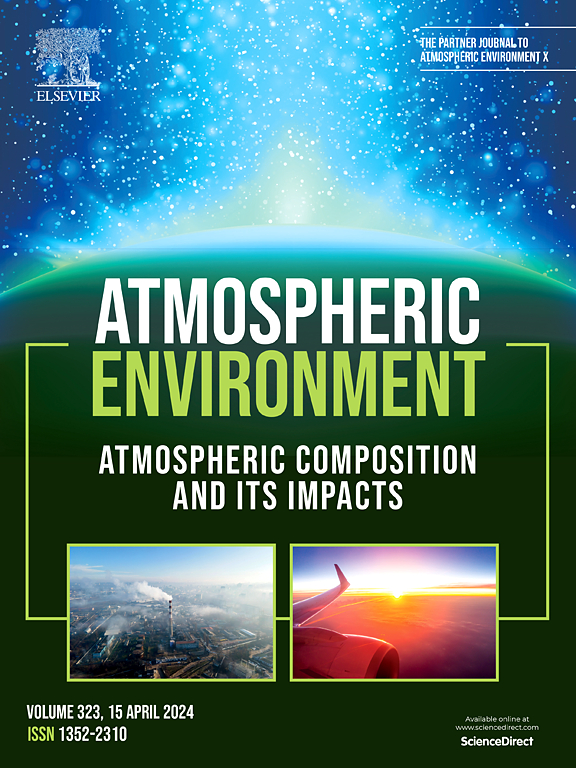Sustained PM2.5 decline in Shenzhen confronts emerging challenges: Strengthening regional governance and secondary aerosol mitigation
IF 3.7
2区 环境科学与生态学
Q2 ENVIRONMENTAL SCIENCES
引用次数: 0
Abstract
Long-term observation at different environmental sites is crucial for accurately tracking PM2.5 trends and formulating effective pollution control strategies. This study conducted PM2.5 sampling and component analysis at urban and suburban sites in Shenzhen in 2014, 2019, and 2024, using machine learning models to assess the impact of meteorological and source emission changes on PM2.5 trends and receptor model to identify PM2.5 sources. The results show that Shenzhen's PM2.5 levels declined by 47 % from 2014 to 2024, mostly due to long-term emission cuts, with meteorological impacts accounting for a minor 11.9 % of the change. Urban PM2.5 concentrations consistently surpass suburban ones, with both experiencing approximately 30 % declines in Phase I (2014–2019), whereas in Phase II (2019–2024), the urban site shows a greater 29 % drop compared with a 17 % drop at the suburban site, narrowing their gap. The source apportionment results show that in Phase I, the urban site's PM2.5 decline stemmed mainly from reduced vehicle emissions and secondary sulfate, while the suburban site's drop resulted from decreased secondary sulfate, ship emissions, and secondary organic aerosols. In Phase II, fugitive dust reduction is the primary driver of PM2.5 declines at both sites, though other sources also play a contributing role. Emission reductions from sources in Phase II are smaller than those in Phase I, coupled with a narrowed concentration gap between the two sites and a rising relative contribution from secondary sources, highlighting Shenzhen's need for stronger regional coordination and secondary pollutant control to lower PM2.5 levels.

深圳PM2.5持续下降面临新挑战:加强区域治理和二次气溶胶减缓
在不同的环境站点进行长期观测对于准确跟踪PM2.5的趋势和制定有效的污染控制策略至关重要。本研究于2014年、2019年和2024年在深圳城市和郊区进行PM2.5采样和成分分析,利用机器学习模型评估气象和源排放变化对PM2.5趋势的影响,并利用受体模型识别PM2.5源。结果显示,深圳PM2.5水平从2014年到2024年下降了47%,主要是由于长期减排,气象影响占变化的11.9%。城市PM2.5浓度持续超过郊区,在第一阶段(2014-2019年)均下降了约30%,而在第二阶段(2019-2024年),城市站点下降了29%,而郊区站点下降了17%,缩小了两者的差距。源解析结果表明,一期城市站点PM2.5的下降主要源于机动车排放和二次硫酸盐的减少,而郊区站点的下降主要源于二次硫酸盐、船舶排放和二次有机气溶胶的减少。在二期工程中,两地PM2.5下降的主要原因是扬尘的减少,尽管其他来源也起了一定作用。二期源减排规模小于一期,且两地浓度差距缩小,二次源相对贡献上升,凸显深圳需要加强区域协调和二次污染物控制,以降低PM2.5水平。
本文章由计算机程序翻译,如有差异,请以英文原文为准。
求助全文
约1分钟内获得全文
求助全文
来源期刊

Atmospheric Environment
环境科学-环境科学
CiteScore
9.40
自引率
8.00%
发文量
458
审稿时长
53 days
期刊介绍:
Atmospheric Environment has an open access mirror journal Atmospheric Environment: X, sharing the same aims and scope, editorial team, submission system and rigorous peer review.
Atmospheric Environment is the international journal for scientists in different disciplines related to atmospheric composition and its impacts. The journal publishes scientific articles with atmospheric relevance of emissions and depositions of gaseous and particulate compounds, chemical processes and physical effects in the atmosphere, as well as impacts of the changing atmospheric composition on human health, air quality, climate change, and ecosystems.
 求助内容:
求助内容: 应助结果提醒方式:
应助结果提醒方式:


